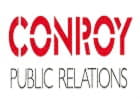Private equity (PE) and venture capital (VC) funds in the U.S. showed stronger performance in the second quarter of 2016 than the first, according to Cambridge Associates benchmark indices of the two alternative asset classes. Energy investments helped generate the rebound for the PE benchmark, and returns from healthcare VC investments made the biggest leap from the first quarter of 2016 to the second.
The Cambridge Associates LLC U.S. Private Equity Index® returned 4.0% in Q2 2016, outperforming the large-cap S&P 500, the small-cap Russell 2000®, and the tech-oriented Nasdaq Composite indices for the quarter. The Cambridge Associates LLC U.S. Venture Capital Index® posted a 0.7% return in Q2 2016, up from -3.3% return in the first quarter.
"U.S. PE funds outperformed public markets over the first half of 2016, as they continue to regain some of the lost ground ceded in the 2012-2014 bull market. Importantly, over the last 10-, 15-, 20- and 25-year periods, the asset class has continued to demonstrate its strong potential for investors that can maintain a long-term perspective and allocation," says Keirsten Lawton, co-head of U.S. Private Equity Research at Cambridge Associates.
"Venture capital funds in the U.S. generated a positive return in Q2 2016, following a disappointing first quarter as private valuations pulled back to some extent after peaking in 2015. The asset class has largely outperformed public markets over extended time horizons - for example, 10, 20 and 25 years," says Theresa Hajer, Managing Director, Private Growth Research at Cambridge Associates. (See table below.)
Cambridge Associates derives its U.S. PE and VC Indices from the financial information contained in its proprietary database of 1,321 U.S. PE funds and 1,653 U.S. VC funds, with a combined value of roughly $795 billion.
Some highlights from the U.S. Private Equity Index in Q2 2016:
- U.S. PE Contributions and Distributions: During the second quarter, investors in the U.S. PE Index contributed $23 billion and received distributions of over $35 billion, almost twice as much as they received in Q1 of this year. Distributions over the first half of the year -- roughly $53 billion -- were about $15 billion lower than during the same period in 2015.
- U.S. PE Sector Performance: All seven sectors that each represented at least 5% of the U.S. PE Index in Q2 earned positive returns for the quarter. The energy sector led the Index's largest sectors with a return of 8.6% after energy valuations bounced back in Q2. Financial services firms produced the lowest returns for the quarter (0.7%).
- U.S. PE Vintage Year Performance: Most vintage years in the U.S. PE Index between 2004 and 2015 posted positive returns in the second quarter of 2016. These 12 vintages represented 97% of the Index's value in Q2. The quarter's top-performing vintage, 2012, returned 9.1% in Q2; its returns were led by write-ups for consumer and hardware companies.
A few insights from the U.S. Venture Capital Index in Q2 2016:
- U.S. VC Contributions and Distributions: Venture capital fund managers in the U.S. VC Index called $3 billion from investors during Q2, and distributed almost $5 billion to them during that period. Both of these measures were up from Q1, though distributions amounted to about half of what investors received in Q2 2015. Distributions to U.S. VC investors have outpaced their contributions every quarter since the beginning of 2012.
- U.S. VC Sector Performance: All three sectors that represented at least 5% of the U.S. VC Index in Q2 earned positive returns for the quarter. Health care companies posted the best returns in Q2 (2.7%), followed by the IT sector (1.1%) and software firms (0.6%). These three sectors attracted 85% of the capital invested by VC managers in Q2 2016.
- U.S. VC Vintage Year Performance: Performance for the four largest vintage years in the U.S. VC Index was subpar during Q2 2016, ranging from -0.1% (2008) to 1.5% (2007). The best-performing vintage in the Index was 2006, which posted a return of 2.1%. IT companies were the primary driver of that vintage's performance in Q2 2016.
For additional details on the performance of the Cambridge Associates private equity and venture capital benchmarks in the first quarter of 2016, please visit https://www.
About the Indices
Cambridge Associates derives its US private equity benchmark from the financial information contained in its proprietary database of private equity funds. As of June 30, 2016, the database comprised 1,321 US buyouts, private equity energy, growth equity, and mezzanine funds formed from 1986 to 2016, with a value of nearly $610 billion. Ten years ago, as of June 30, 2006, the index included 704 funds whose value was nearly $227 billion.
Cambridge Associates derives its US venture capital benchmark from the financial information contained in its proprietary database of venture capital funds. As of June 30, 2016, the database comprised 1,653 US venture capital funds formed from 1981 to 2016, with a value of roughly $185 billion. Ten years ago, as of June 30, 2006, the index included 1,143 funds whose value was $67 billion.
Because the US Private Equity and Venture Capital indexes are capital weighted, the largest vintage years mainly drive the indexes' performance. Public index returns are shown as both time-weighted returns (average annual compound returns) and dollar-weighted returns (modified public market equivalent or mPME). The Cambridge Associates mPME calculation is a private-to-public comparison that seeks to replicate private investment performance under public market conditions. The public index's shares are purchased and sold according to the private fund cash flow schedule, with distributions calculated in the same proportion as the private fund, and mPME net asset value is a function of mPME cash flows and public index returns. Over any one quarter, an mPME and time-weighted return will match, but they will begin to diverge over longer time horizons because the mPME calculation takes into account the size and timing of cash flows.
About Cambridge Associates
Cambridge Associates is a global investment firm founded in 1973 that builds customized investment portfolios for institutional investors and private clients around the world. Working alongside its early clients, among them several leading universities, the firm pioneered the strategy of high equity orientation and broad diversification, which since the 1980s has been a primary driver of performance for these leading fiduciary investors. Cambridge Associates serves over 1,100 global investors -- primarily foundations and endowments, pensions and family offices -- and delivers a range of services, including outsourced investment (OCIO) solutions, traditional advisory services, and access to research and tools across global asset classes. Cambridge Associates has more than 1,300 employees -- including over 150 research staff -- serving its client base globally. The firm maintains offices in Arlington, VA; Boston; Dallas; Menlo Park and San Francisco, CA; London, UK; Singapore; Sydney; and Beijing. Cambridge Associates consists of five global investment consulting affiliates that are all under common ownership and control. For more information about Cambridge Associates, please visit www.cambridgeassociates.com.














